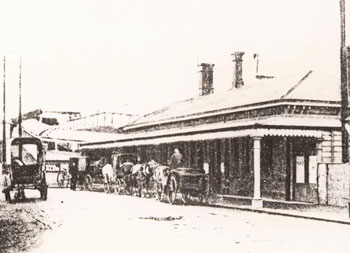History of Hither Green
Hither Green was so called because it was closer to Lewisham than Further Green in Verdant Lane. Hither Green was in the area where George Lane and Hither Green Lane now meet.
There is good reason to think that the medieval village of Romborough was the forerunner of Hither Green, but that it was destroyed by the Black Death. The first houses of the revived village were built in the eighteenth century. More followed in the early nineteenth century, many of them substantial residences. Mountsfield, for instance, was the home of Henry Tibbats Stainton, a leading entomologist. The grounds of this house became the core of Mountsfield Park, which opened in 1905.
Hither Green Station was opened in 1895. In 1896 Archibald Cameron Corbett bought the 278 acres of North Park Farm, and began to build houses in Catford and Hither Green, on what is now called the Corbett estate. He persuaded the railway company to build a booking hall on the east side of the station, for the benefit of his residents, and negotiated reduced-rate season tickets for them. Corbett was a Scot, and gave his roads Scottish names. He donated the site of St Andrew�s Church.
The Park Fever Hospital (later called Hither Green Hospital) was opened in 1897 for the treatment of infectious diseases such as scarlet fever or diphtheria. After the Second World War, when it suffered severe bomb damage, other cases were also treated there. The hospital closed in 1997, and its site has been redeveloped as housing.









